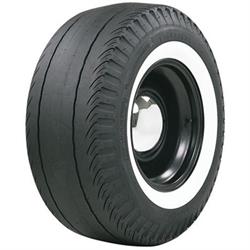Can I Mix Bias and Radial Tires?
Everyone has that special voodoo that they do. From those special driving gloves, to making your significant other take off their shoes, to the fuzzy dice handed down from your grandpappy, we all have our little quirks that we think help our vehicles perform better. Sometimes you heard about it from a buddy over cards, sometimes someone at a show told you they heard it from their brothers’ sister’s third cousin twice removed. (It’s happened.) We are going to address one of those quirks right now.
What’s the big deal with mixing radial tires and bias-ply?
The main difference between radials and bias-ply tires is in the construction. Radials are built with cords basically running at right angles compared to each other when compared to the tread pattern center, and have reinforcing belts of either cording or steel. Bias-ply tires are constructed using overlapping cords placed in a crisscross pattern of 30°-40°.
Due to the respective construction, the bias ply tire will have significantly less sidewall flex than the radial. The contact patch will be less, and in result you will not be able to transfer as much power to the ground. The tire is also less flexible when mounted, which provides for the major disadvantage of a bias tire, as more feedback is transferred back to the car on rough surfaces.
Radial tires will have more sidewall flex, allowing for more efficient transfer of power to the ground. Increased efficiency in power transfer means better fuel economy. Radials also last longer than their bias-ply counterparts, and are more resistant to punctures and tears. You will also reap the major benefit of the radial tire: better steering responsiveness.
What this means is that at highway speeds, the bias-ply tire will heat up and actually lose traction. While it is not recommended that you not mix radials and bias-ply tires on the same vehicle, some do in race applications. If you so choose, be certain that the radial tires are placed on the rear axle, and the bias-plys on the front. In a race situation with bias-ply tires on the front axle you will experience under-steer. Be aware that the difference in construction will make the tires react very differently, and result in the vehicle being very unstable.
In the end, we will leave you with one last bit of advice. Tires of different sizes, constructions, and wear history can and will affect the stability and handling of your vehicle, and potentially endanger you and those around you. We say don't mix them.







